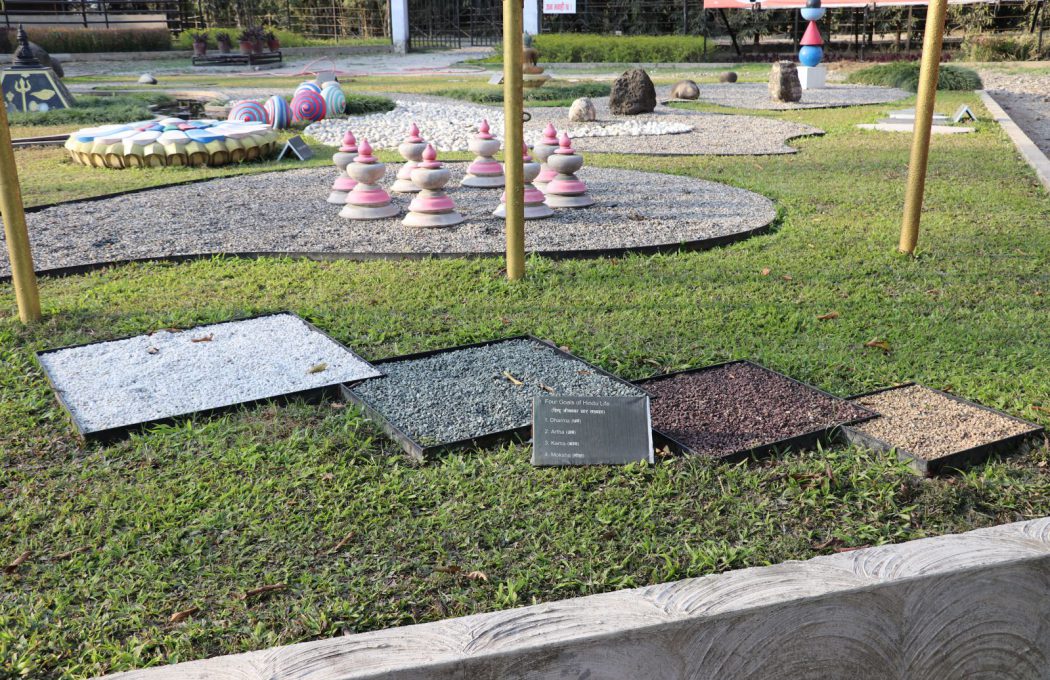
Four Phases of human life has been indicated by four circles. They are known as four ashrams.
Brahmacharya (student): Brahmacharya is the first stage of life which is the student stage of life, preparing for success in later stages of life. Individuals should also gain religious training, in order to lay the foundation for spiritual practice. Traditionally, education started somewhere between 5 and 8 years of age, continuing to age 14 to 25.
Gṛihastha (householder): Grihastha Know as the “householder” stage, it follows what most people do naturally after leaving school: Maintaining a home, having a family. Though some people choose to forgo having children and/or remain single, for one reason or another, most Hindus choose to practice their spirituality while raising families. Marriage is given a high priority in Hindu culture, and there is much in Hindu scriptures detailing how to make marriage as successful as possible.
Vanaprastha (forest walker/forest dweller): Vanaprastha is the third stage. It begins after individuals fulfil their obligations to their families. In ancient times, once reaching this stage people would start detaching themselves from family life and the pursuit of material ends by moving to the forest to devote more of their time to spiritual practice, living among other seekers of solace, knowledge, peace, and freedom.
Sannyasa (renunciate): Sannyasa is the fourth stage of life according to hinduism.Those few Hindus who from an early age have a calling or want to live an entire life immersed in scriptural study and a monastic lifestyle under the direction of a guru, exclusively pursuing the goal of moksha, enter into this stage at a young age. Other Hindus, who have lived a more traditional life enter into a period of renunciation following stages two and three.